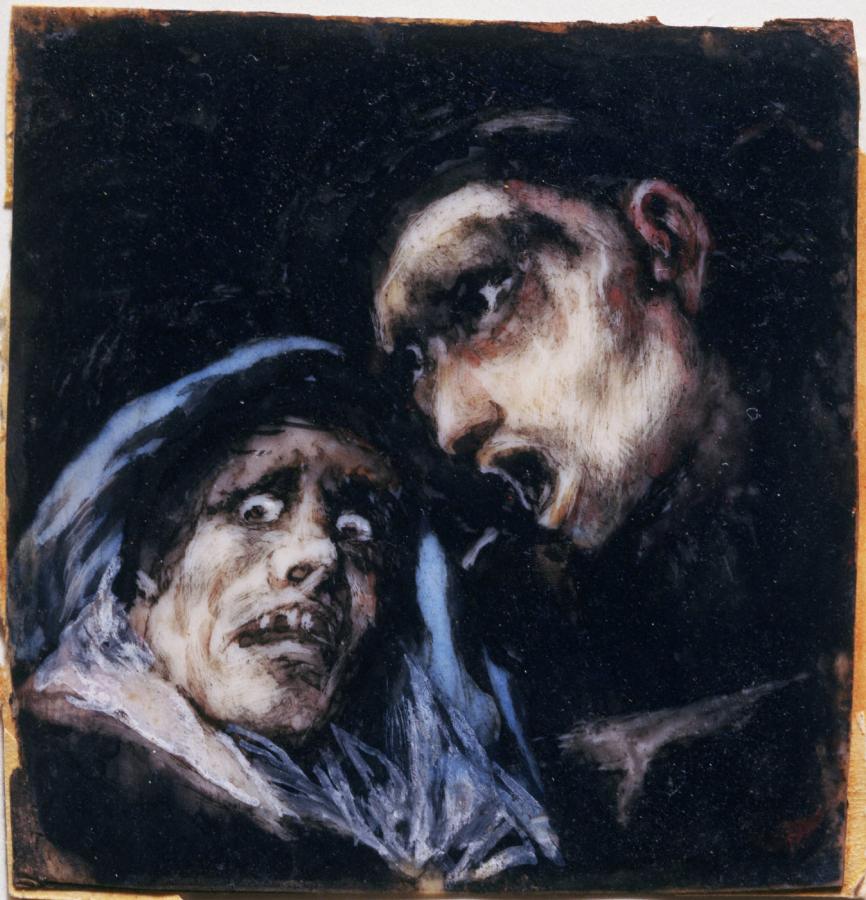Goya, Francisco de (1746-1828)
Monje hablando con una anciana (Monk Talking to an Old Woman)
c.1825
Watercolor, 5.7 x 5.4 cm
Princeton University Art Museum, Princeton
In December 1825, Goya wrote to his friend Joaquín Ferrer, “It is true that last winter I painted on ivory, and have a collection of some forty experiments, but it is a new kind of miniature which I never saw before.” Then seventy-nine years old, Goya was living in exile in Bordeaux, having fled the oppressive rule of Spain’s King Ferdinand VII. He could no longer see or hear well but nevertheless devised an entirely new method of painting. Instead of building up a figure from tiny dots of paint, he blackened pieces of ivory and let random drops of water create forms he would then develop. Goya did not paint these tiny scenes from nature but from his imagination. His experience of creating works of art in series (especially in his prints) is evident in this medium, as he worked out similar scenes with psychological overtones in the other known ivories. Such disquieting content—long present in peripheral figures in his paintings or as primary subject matter in his prints—is here allowed free reign. (PUAM)
